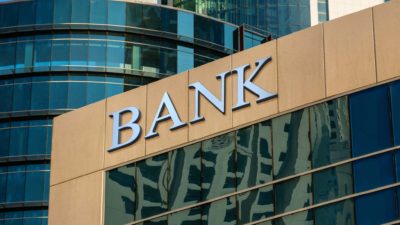The National Australia Bank Ltd (ASX: NAB) share price was an underperformer in August and came in with a 3 basis point decline for the month.
Before the open on Thursday, shares of the banking giant and member of the 'big 4' of banking in Australia rest at $30.59 apiece.
What's up with the NAB share price?
Despite a strong set of earnings results printed for FY22, where cash earnings increased 6% year on year, investors haven't nibbled at current prices.
In fact, NAB shares were on the upward trajectory since catching a bid from around mid-June, but growth has since levelled off to current ranges.
Heading into August, momentum was high for the bank's share price after stretching up from 52-week lows of $26.06 on 20 June.
Chief to the upside was the Reserve Bank (RBA)'s decision to begin the hiking cycle of its key policy interest rate – known as the cash rate in Australia.
In a move that followed several other central banks from around the globe, the RBA shifted the cash rate to its highest point in several years.
The move is seen as beneficial to the financial sector, including banks and listed investment companies, due to profits obtained on interest rate differentials.
So as the RBA has lifted the cash rate, so too has NAB lifted its lending/borrowing rates for residential and commercial mortgages, alongside other debt facilities.
It's not all that simple, however
NAB theoretically will realise this gain at the net interest income (NII) and net interest margin (NIM) levels – two key benchmarks in the evaluation of banking shares.
The NIMs for banks like NAB benefit from the higher interest income charged on its loaned funds as it underwrites new credit to borrowers (interest is the cost of money). As such, extra income is potentially fed down to NAB's bottom line.
However, Australia's mortgage and lending market is extremely competitive, and this competitiveness has placed an artificial ceiling on how far banks can lift lending rates, seeing as the hallmark for competition is lower costs.
Some banks have even lowered the interest rate on some of their products in order to stand out from the pack and drive additional NII.
Not to mention, new house sales and existing home sales continue to weaken in 2022, alongside the collapse of several construction companies.
Moreover, the RBA's moves to lift the cash rate are by meticulous design in order to clamp down on hot-running inflation.
It is in fact the RBA's primary mandate to keep inflation within a 2-3% radius – something it has failed tremendously over these past 12 months, not necessarily by entire fault of its own.
Whatever the supposed cause of the jump in living costs, the RBA has to wind back inflation, and it has a balancing act with the real economy in doing so.
See, raising interest rates will certainly control inflation at some point, but it does this at the sacrifice of economic growth and aggregate demand.
Put simply, the RBA needs to successfully navigate pulling inflation back down whilst preventing the economy from entering an all-out recession. In a paradox, it does this by raising base interest rates, thereby slowing the economy.
If it lets inflation run, the eventual recession caused by this is undeniably worse and has far more reaching consequences, and produces a scenario known as 'stagflation' – whereby there's negative economic growth with soaring inflation. If you know anything about modern history, think Germany's economy post WW1.
In any sense, these dynamics have played havoc on the shares of ASX banks in FY23, with NAB no exception.
Strengths from potential higher NII and NIMs are offset by weakness in Australian property, higher interest rates and the prospects for lower economic growth. Each isn't conducive to banks underwriting more loans.
The NAB share price is still up 8% in the past 12 months.









